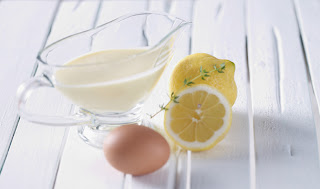This a
controversial greek dish. People either love it or hate it.
It is usually
cooked in two versions, a simple spinach risotto on which we drizzle some lemon
juice or with tomato juice and it’s definitely vegetarian.
My version, however,
is finished with avgolemono (egg-lemon sauce) which completely transforms it. I’d
like to thank my aunt Lefki who made me change my mind about spanakoryzo with
this recipe, and my son Chris, who helped me with the photos.
For 4
hungry people we’ll need:
- 1 cup
olive oil
- 250 grams
spinach leaves, coarsely chopped
- 4 spring
onions, chopped
- 1/2 cup
chopped dill
- ½ cup chopped
herbs, I use “kafkalithres” (Hartwort) and “mironia” (Venus’ comb)
- 200 grams
rice for risotto (Arborio or Carolina)
- 2 large
eggs, preferably organic
- 1 lemon
- 1 lit
warm water
- salt,
pepper
Put the
olive oil in a large deep frying pan, add the diced onion and cook until tender.
Add the chopped greens and stir lightly until they reduce in size and their
juices are evaporated.
Add a glass of warm water and wait until it forms bubbles on the
surface. Repeat this procedure until all the water is added.
Season well, put a
lid on the pan and turn down the heat.
Let the rice simmer until it becomes as
tender as you like.
When we are satisfied with the texture of the rice, we check
the remaining liquid in the pan. It must have the consistency of thick soup,
otherwise add some more warm water. Taste the seasoning and take it off the
heat.
 It’s time to make the avgolemono sauce.
It’s time to make the avgolemono sauce.
Pour the
sauce over the risotto and mix well with a wooden spoon.
Serve warm with some cheese.
Good
apetite!













.JPG)













